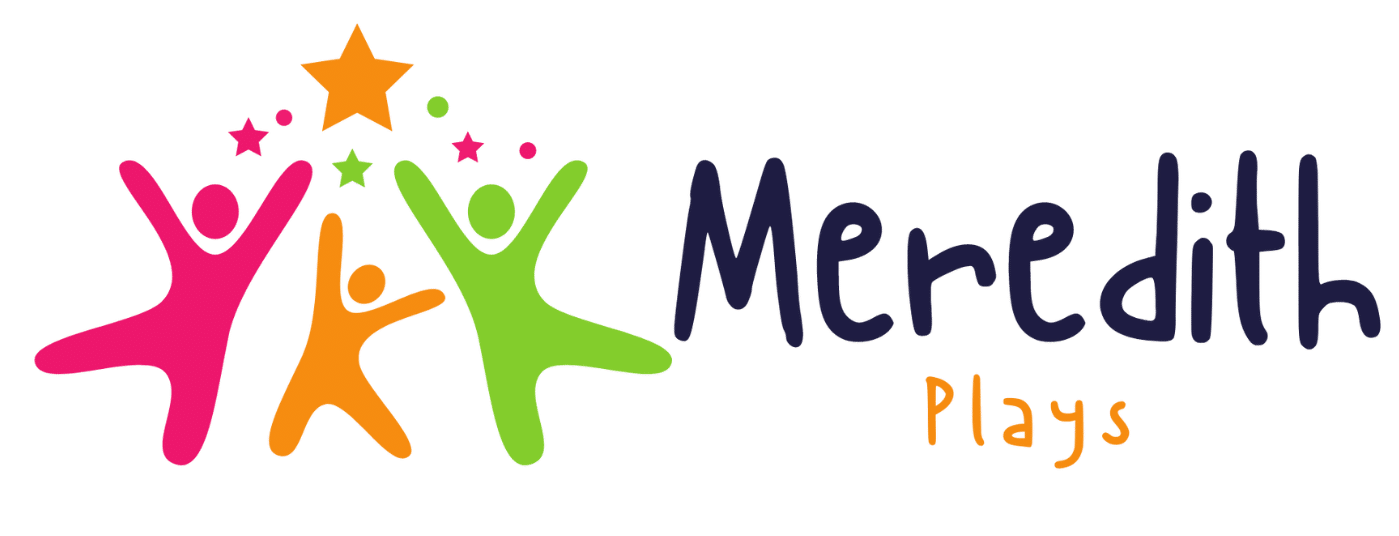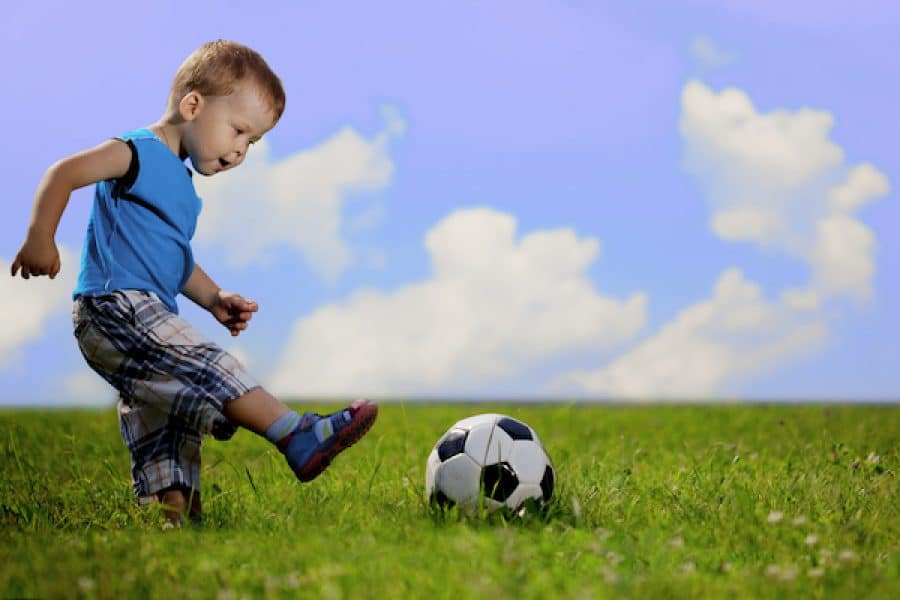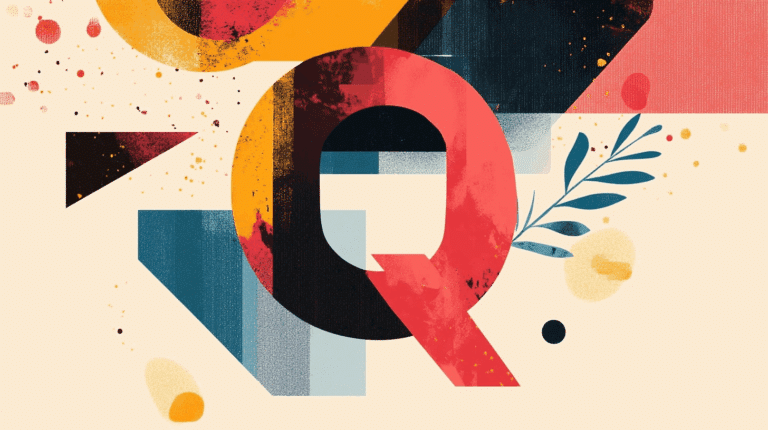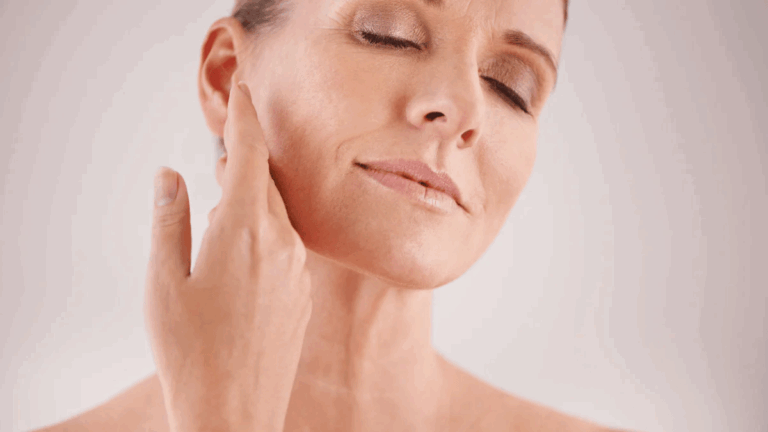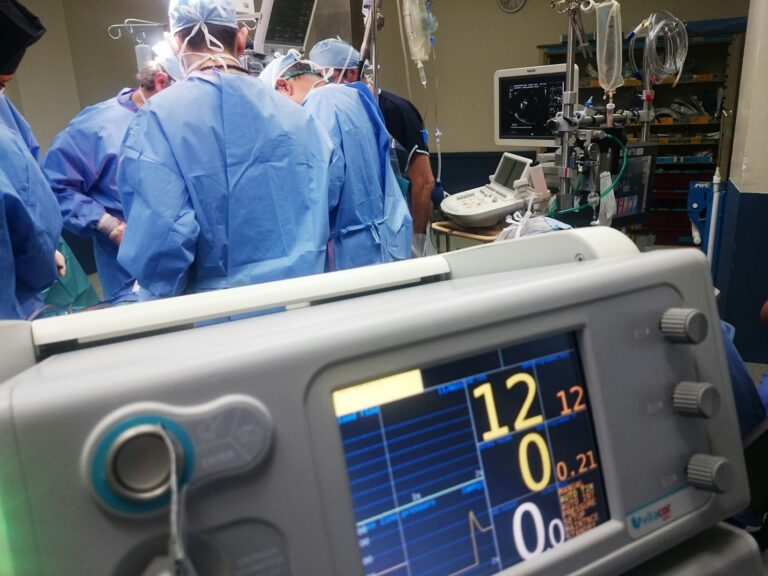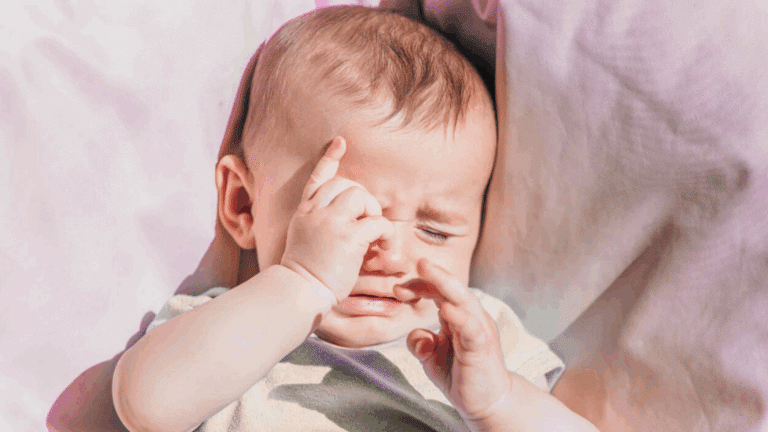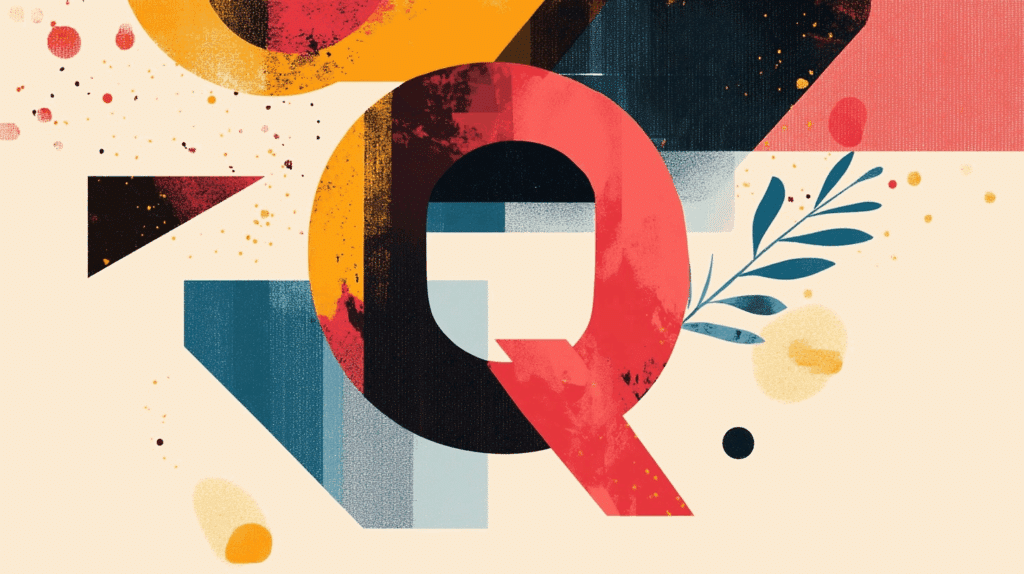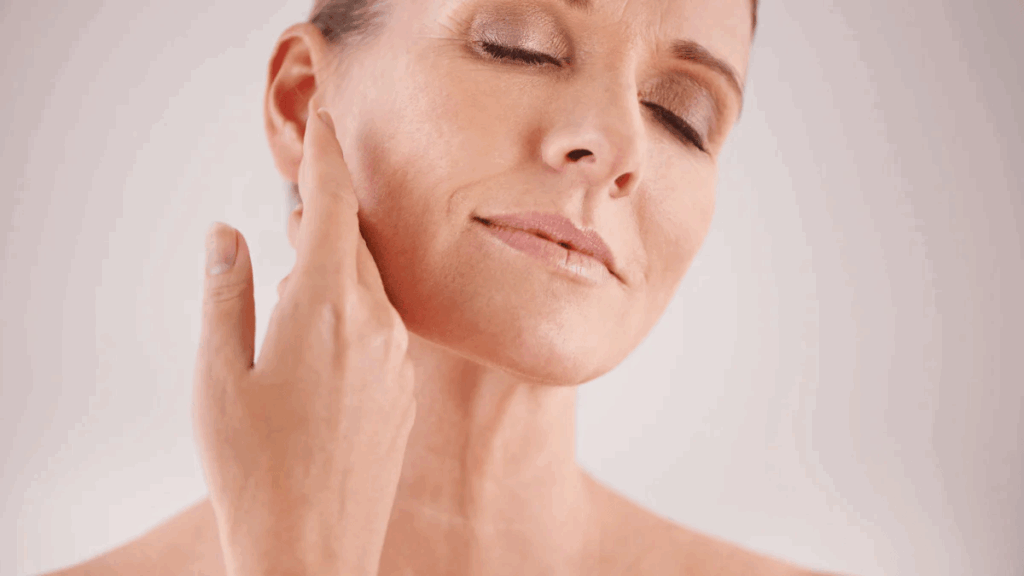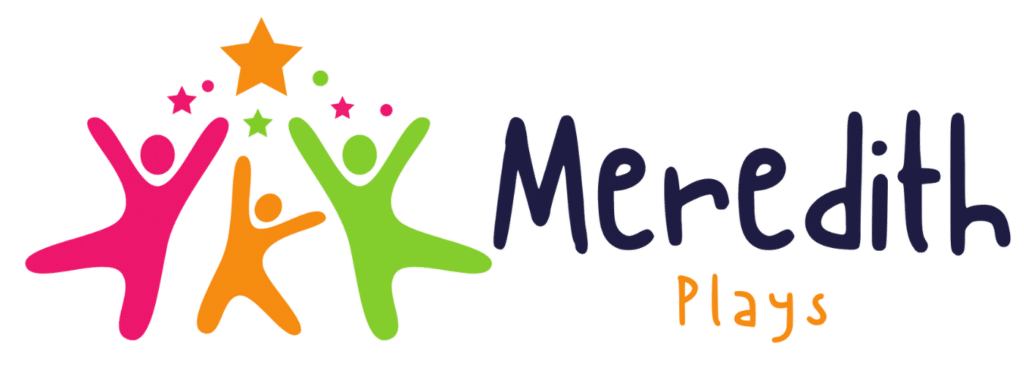Have you ever noticed the different growth stages of a child? They are very interesting and gradually progress with the child’s age progression. This child’s development journey brings struggles, happiness, excitement, and bewilderment into the parent’s life.
However, some of the factors related to this journey remain unclarified to some parents. The motor development stage is one of them, which hardly a few parents are aware of.
So, In this piece of writing, we are going to cover the child’s gross motor development skills stages according to their age. However, before proceeding any further with the topic, it is necessary to understand the fundamental part of it properly. For that, we need to get through the overall motor development concept.
So we are going to start off with the same.
Defining Motor Development
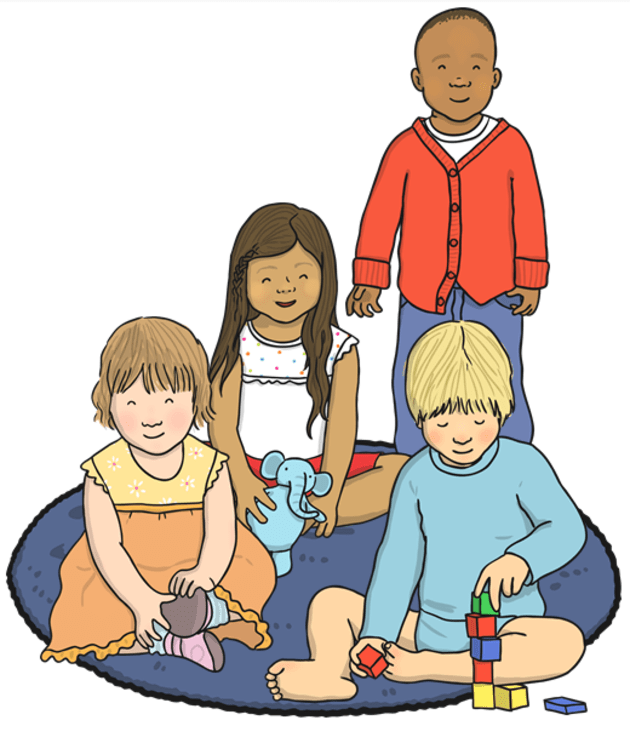
Many of you might have heard the motor development word numerous times but have not thought it is regarding child development (some parents might have been aware of it).
In general, motor development is the motion of body parts and muscles by using small or large body parts. As we sit, stand, walk, write, etc., we all perform motor activities in our daily lives.
Of course, these activities we have learned in our childhood development period, and it is called motor development. Motor development has been divided into two sets of skills where body part movement is differentiated by significant body part muscle movement and small body part muscle movement.
Let’s move forward with these two types of motor development skills.
1. Gross Motor Skills
Generally, large muscle movements come under the gross motor skills category, i.e., hand, legs, trunks, etc. Gross motor skills usually take place on their own in child development, like tummy time, seating, crawling, standing, and then walking, etc.
They perform these tasks themselves by taking support from their parent or guardian. Although after having a proper grip on these primary activities, they start to learn new activities in adolescence with the help of others, such as swimming, dancing, and sports like cricket, football, and many others. However, gross motor skills are not restricted to a specific age limit.
2. Fine Motor Skills
Child development experts claim that fine motor skill is a step ahead of gross motor skill. However, fine motor skills are more intricate than gross motor skills and are related to smaller muscle movements such as hand, fingers, wrist, etc. Fine motor skills have a certain complexity while practicing them, but they are an essential factor in every child’s overall development.
A lack of these skills will have a negative impact on a child’s personal as well as academic development. For instance, children will be unable to conduct their routine activities such as taking a bath, combing hair, dressing up, etc. As long as academic or educational concerns, the child will face gripping or holding something, which ultimately affects their writing tasks. Hence, fine skill development is going to be a concrete aspect of ensuring the healthy development of a child.
As we discussed here, gross and fine motor skills are integral factors in a child’s life. However, in both gross and fine motor skills, there are logical milestones, and they are age-wise categorized. In fact, this milestone assessment process can assist parents in checking on their child’s development and taking positions according to their age. So, let’s find out the age-according gross motor skill progression assessment in the following pointer.
Gross Motor Skills Examples: Age-Wise Development
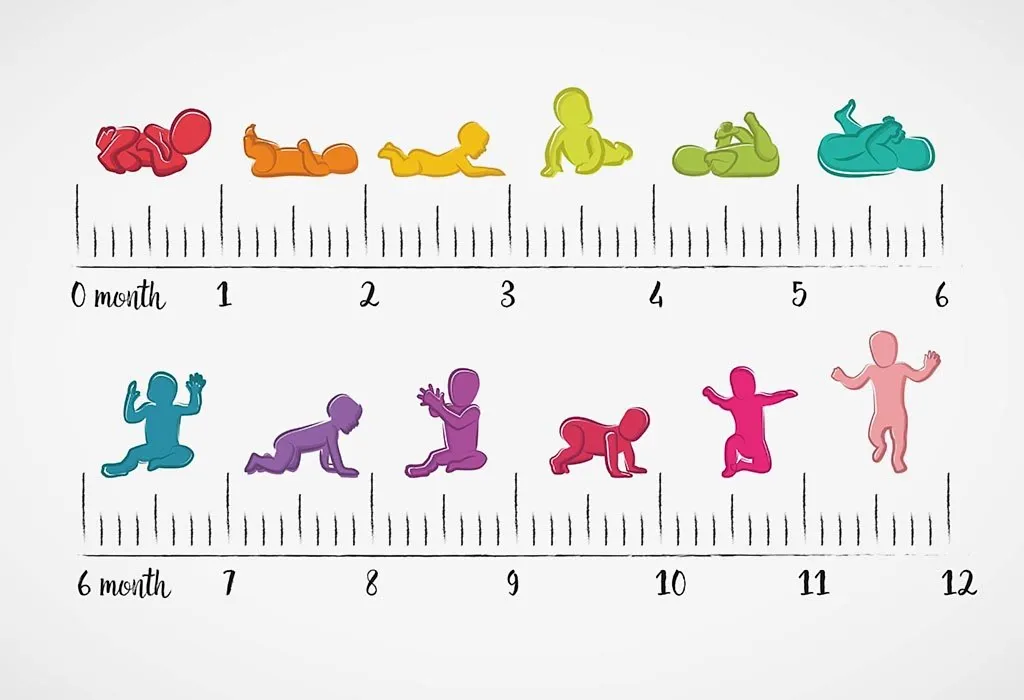
The first and foremost thing to understand before moving any further with this point is every child’s development journey is different, so we should avoid the comparison between the two children’s growth stages.
Now, moving back to the topic here, we have presented age-wise gross motor skills development examples to let you understand more easily. So let us get started with the same.
Fact – Gross motor skill development always begins with upper body muscles and simultaneously moves over lower body muscles. In medical language, this process is called Cephalocaudal Direction.
0 to 3 Months
According to pediatricians, gross motor skill activities are primarily acknowledged in infants in 3rd month after birth. Eventually, it starts from the neck muscles, and around 3 months, a child will be able to have control of neck muscles. Hence, a child can hold the neck properly at this point in time.
4 to 6 Months
After getting effective balance with the neck muscle, the next muscle will be the abdominal muscles. Using abdominal muscle child will start rolling.
6 to 8 Months
Approximately around 6th month after birth child will start to involve hip muscles and try to sit, taking the support of a parent or guardian.
8 to 10 Months
At the 8th month child will have fine control of hip muscles and will be able to sit without any support.
Moreover, around this time child will be able to conduct another activity along with seating, and that is crawling. However, two activities can take place at similar phases of time.
10 to 12 Months
Knee muscle involvement will start around 10th month, and the child will start to bear crawl and can stand with support.
12 to 15 Months
At the age of the 12-month child will be able to stand on their own and will start walking with assistance.
15 to 18 Months
Around the 15th month, a child will have complete control over their knee muscle and start walking independently.
18 to 20 Months
After getting proper awareness about walking activities, the child will start running by the age of 18 months.
2 Years
Across the age of 2, children can climb up and down stairs, taking 2 feet per step.
3 Years
Climbing up the stairs is easier than climbing down the stairs for a child. However, at the age of 3, children can climb up the stair taking feet per step. At the same time, climbing down the stairs will take some time.
In addition, at this age, a child can learn to ride a tricycle.
4 Years
By the age of 4, children can easily climb up and down the stairs, taking 1 foot per step.
5 Years
After having all body muscle involvement, the child can conduct other activities very efficiently at the age of 5. For instance, hopping, skipping, running, riding a bicycle, and many others.
Up to 5 years of gross motor skills examples featured above are essential to track the gross motor development of a child. However, in some cases, these activities are a little faster in some children, like they start rolling, crawling or, walking, etc., activities a little earlier than the estimated age.
On the other hand, some children will take some time to do the same activities. If there is very slow development of gross motor activities, then parents indeed need to pay some extra attention to it. Somehow, for parents, it might take some time to realize any difficulty in the gross motor skills of a child.
So, in the following pointer, we have described some factors to let parents check and confirm whether they seek a child development practitioner’s assistance.
How to Evaluate Gross Motor Skill Difficulty in a Child?
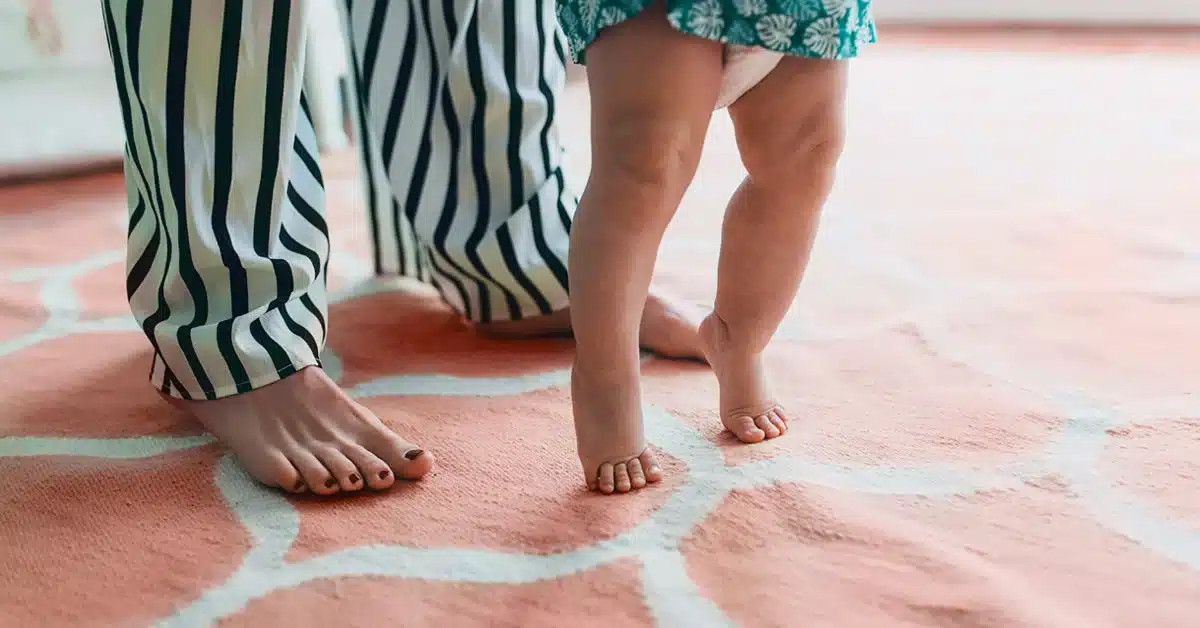
Gross motor skills development is the most important phase of a child’s life. In addition to this, gross motor skills are a primary aspect that needs to be proficient to achieve brain development, speech or language development, and overall social and educational development. Moreover, gross motor skills are essential to encourage proper fine motor skill development, too.
The following few aspects around the significant age ( according to age-wise development) can provide some guidance to conclude whether a child has difficulty in performing gross motor skills.
- The child is having difficulty in walking and has issues in balanced walking, or they walk on their toes.
- The child is unable to run or jump properly.
- Unaware of how much pressure should be used for performing certain daily activities. If noticed, picking up or putting down something with lots of pressure and in a loud manner or aggressively. In some cases, the child bangs on the door very loudly.
- Unable to do daily self-care activities
- Have speech issues.
These are some primary indicators to figure out if there are any issues regarding gross motor skill development in a child. In case a parent discovers any kind of difficulty in a child’s gross motor development, there are some home-based exercises that they can easily practice to improve their child’s gross motor skills. Let’s take a look at these activities.
Gross Motor Skill Enhancing Exercises at Home
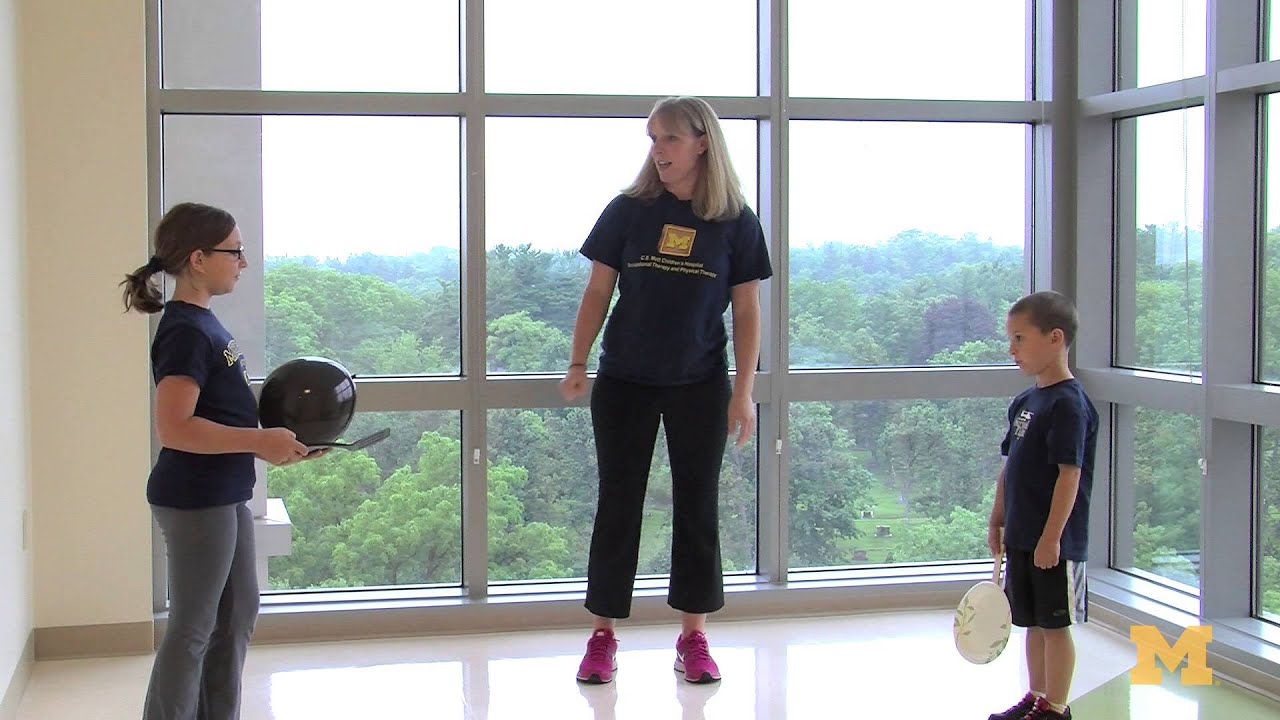
1. Improve Balanced Walk
- In this activity, draw a straight line on the floor using chalk and ask a child to take a straight walk on that line.
- In a variation, draw a cris cross line here. You can add certain obstacles and instruct the child to walk on the line without disturbing the placed obstacle.
- Another variation can be tried by drawing 8-shaped lines and letting them walk on that line.
Meanwhile, these activities can improve a child’s balance while walking.
2. Improve Jumping or Hoping
- Jumping practice can be started with a small stool if a child is hesitating or scared of jumping.
- The trampoline will be the best option to improve the jumping skills of a child. However, the trampoline helps to bounce back, so it will be easy to practice jumping on it.
- Draw lines like a box and ask the child to hop from one box to another box. When a child is able to hop on both feet, the next step will be to instruct them to involve one leg and jump.
However, in these activities, parents need to take the initiative to encourage the child.
3. Improve Brain and Body Coordination
- For this activity, take a water bottle of approx 250 ml and a glass. Ask a child to pour water into the glass without spilling it.
- In contrast, the activity instructs a child to pour water from a glass into a bottle.
These activities will strengthen the muscles and develop brain-body coordination in children. In addition, the water bottle weight can be increased gradually for better results, i.e., 250 ml, then 500 ml, next 1ltr, and so on.
4. Improve Pressure Senses
- In this activity, parents need to participation where they can let their child realize how to close the door without banging by performing the proper door-closing activity in front of the child.
- In a variation, parents can try this activity with a child using different types of doors like metal, wooden, fiber, etc., where they will acknowledge how much pressure they need to put while closing the door without making noise.
Children must understand pressure mechanisms to do daily activities, and this activity will help them to improve their senses.
5. Improve Hand-Eye Coordination
- In this activity, a ball catch and throw task needs to be conducted by parents. Throw the ball toward your kid and ask them to catch and similarly ask them to throw again.
- In a variation, a parent can increase the distance and ask them to catch or throw the ball.
- Another activity will need a few baskets and balls. In this activity, place baskets at a particular distance and instruct a kid to throw balls in those baskets.
- Parents can try bowling pins or bottles and balls. Place these bowling pins or bottles in line and instruct the child to throw the ball on them like a bowling pin game.
In these particular activities, kids will take some time to perform well, but gradually, after understanding the hand-eye coordination concept, they will do it better. Moreover, it will be beneficial for muscle strengthening as well as to develop pressure senses.
All the above activities are very useful and easy to encourage a child’s gross motor development. Moreover, parents can add some interesting toy sets to make this development journey more exciting for a child. Here we have suggested some interesting toys for gross motor skill development.
Toys for Gross Motor Skill Development
1. Suction Cup Throwing Game

- Brand – Popdarts
- Color – Multicolor
- Pack Includes – 6 silicon pop darts, 1 target marker, and 1 instruction printed mesh carry bag.
- Age Recommendation – Suitable for any age
2. Crocodile Hop Floor Game
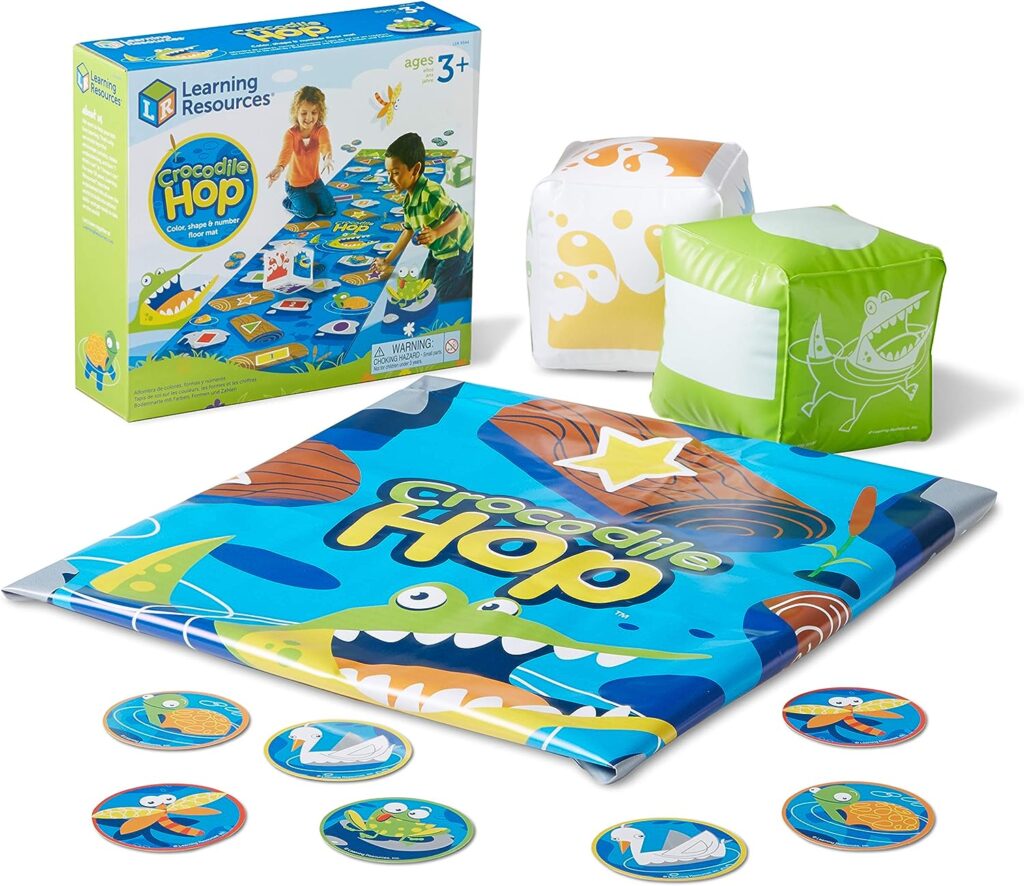
- Brand – Learning Resources
- Color – Multicolor
- Pack Includes – 1 vinyl mat, 40 game markers, 2 inflatable cubes
- Age Recommendation – 3+ yrs
3. Stepping Stone
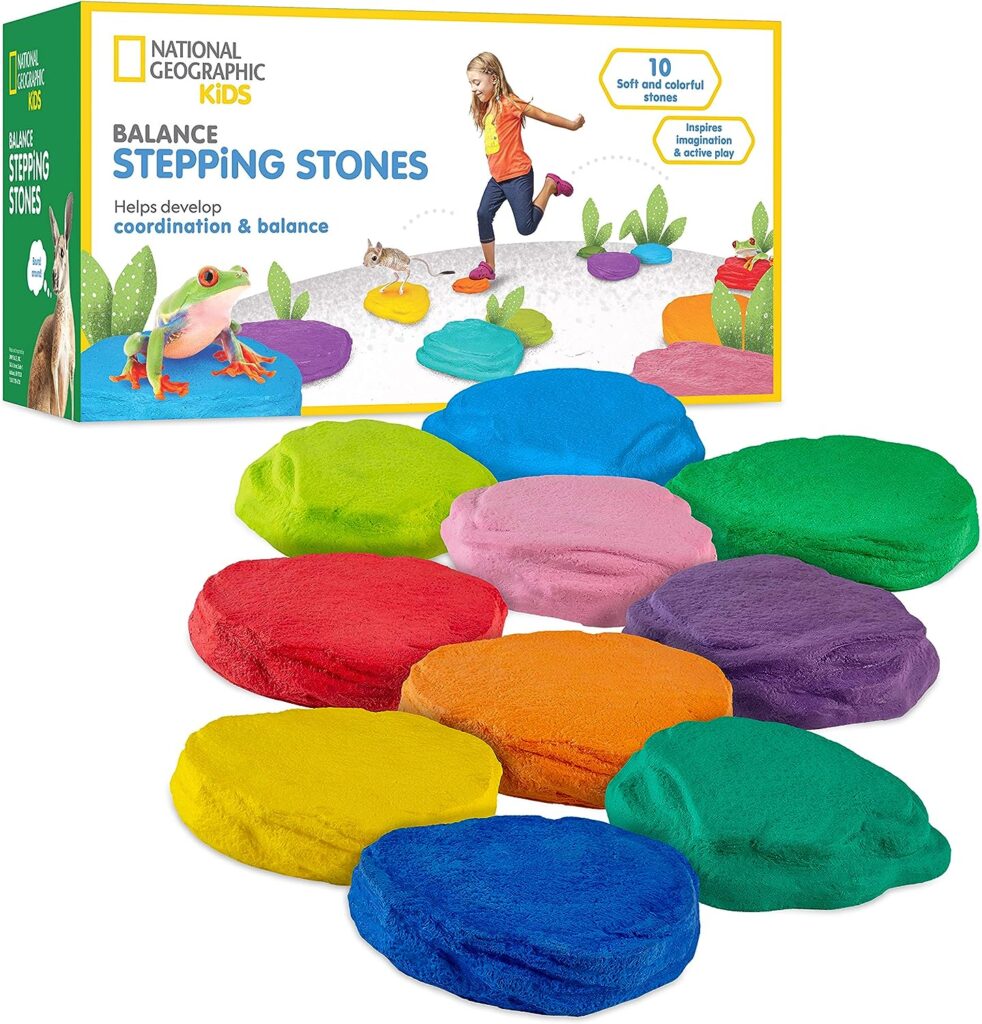
- Brand – NATIONAL GEOGRAPHIC
- Color – Multicolor
- Pack Includes – 10 foam stepping stones
- Age Recommendation – 3+ yrs
4. Wooden Ring Toss Game
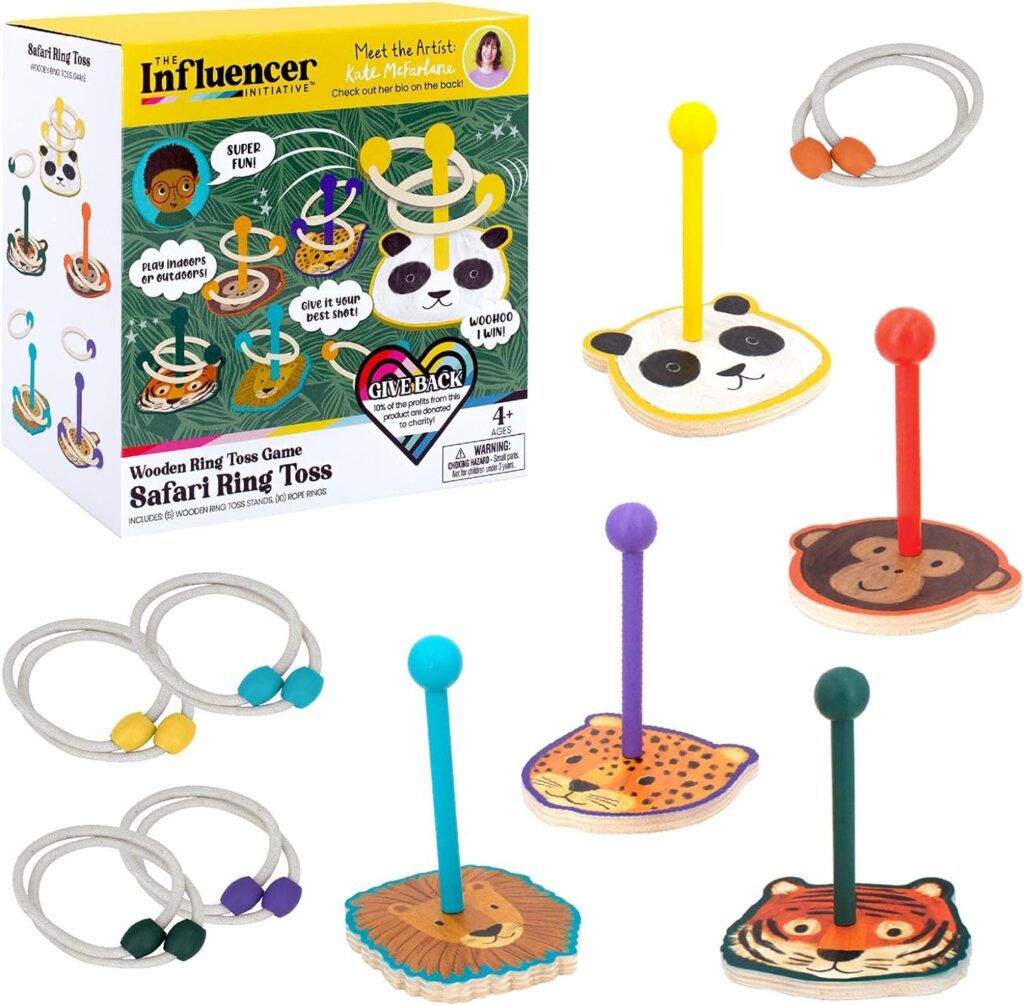
- Brand – The Influencer Initiative
- Color – Multicolor
- Pack Includes – 5 wooden peg targets, 10 wooden toss rings
- Age Recommendation – 3+ yrs
5. Lawn Dart Games
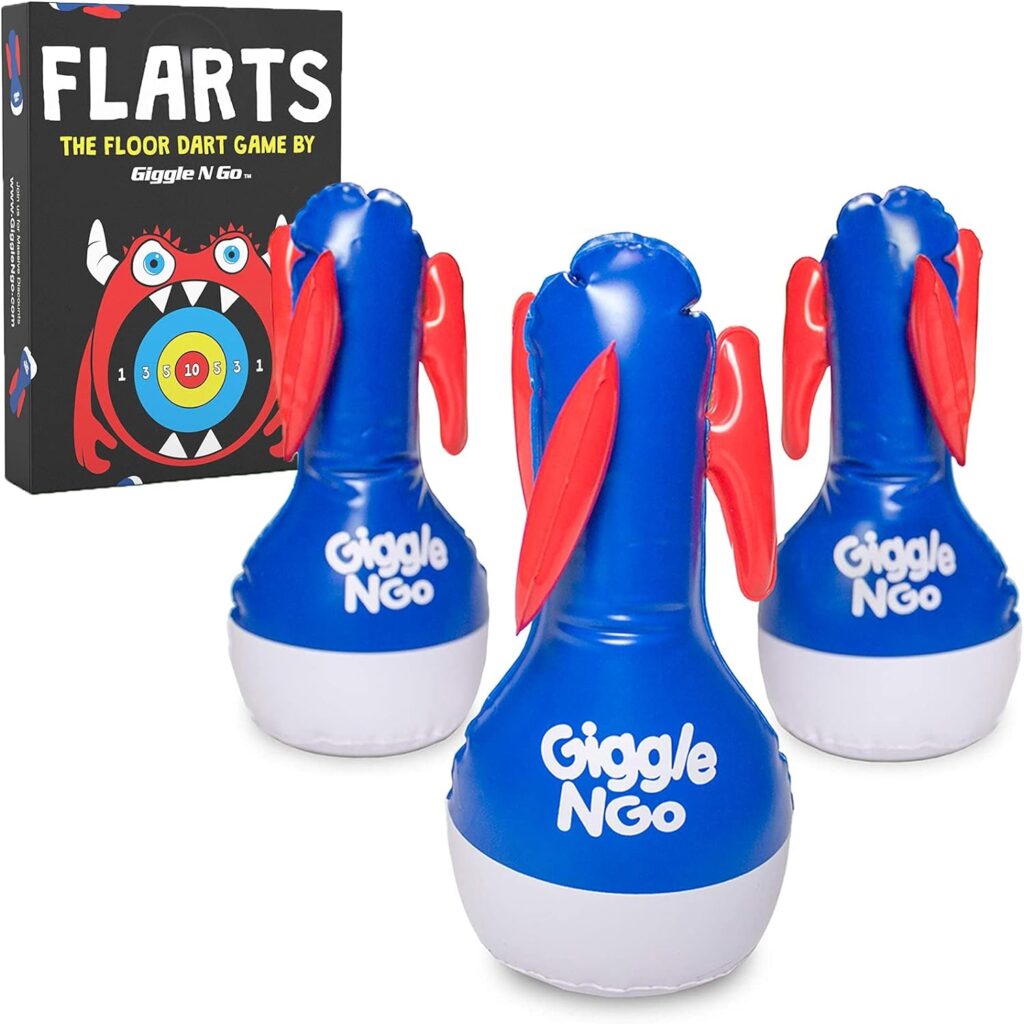
- Brand – Giggle N Go
- Color/Theme – Monster theme/Unicorn theme
- Pack Includes – 1 Dubble-sided lawn mat, 3 inflatable darts, 4 lawn pegs
- Age Recommendation – Suitable for every age
Conclusion
When a child is growing, they seek significant attention and support from parents. However, it is very important to understand that every child has their own growth journey. For instance, In some cases, some child will effortlessly conduct their development journey, whereas some will encounter difficulty.
It is the parent’s responsibility to figure out what obstacle their child is facing. Especially children’s gross motor skill development because they are the primary phase of their successful overall development.
In this article, we have described age-wise gross motor skill examples. These age-wise gross motor skill stages will let parents understand whether their child is on the right track or lacking something. In addition to it, we have also shared some indicating factors to check on with a child.
Apart from the overall gross motor skill aspects, shared simple solutions will indeed assist every parent in improving their child’s gross motor skills. However, all these activities will be more effective if a parent will actively participate in them with the child.
Frequently Asked Questions
What are the Five Gross Motor Skills?
Gross motor skill is related to body muscle movement—especially large body parts and muscles such as the neck, abdomen, leg, etc. So any movement related to large body muscles is called gross motor skills. For instance, crawling, walking, seating, standing, jumping, etc. All these activities come under gross motor skills.
At What Age Do Gross Motor Skills Develop?
Gross motor skills start to develop from a child’s birth itself as they do unconsciously hand, neck, or leg movements at the very early stages of age. It gets proper recognition at the age of 3 months when they start holding their neck and then age wise gradually take control of lower body parts like abdominal muscles, knee muscles,s and so on.
